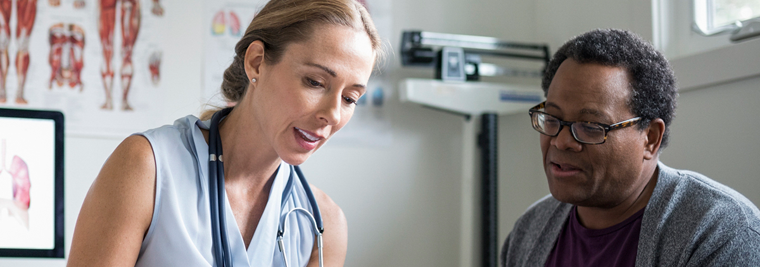Recently published research evaluated nurse and patient care technician workflow to identify opportunities for providing education to patients during care. The study sought to examine the feasibility of implementing a diabetes education program on a tablet computer in the hospital setting within existing nursing workflow with existing staff.
“Understanding Nursing Workflow for Inpatient Education Delivery: Time and Motion Study” was published in the Journal of Nursing Care Quality. The collaborative research team included Kelley M. Baker, MA and Kelly M. Smith, MSc, PhD from the MedStar Institute for Quality and Safety and MedStar Health Research Institute; and Michelle Magee, MD from the MedStar Diabetes Institute, MedStar Health Research Institute and the School of Medicine and Healthcare Sciences at Georgetown University.
The researchers conducted a time and motion study of nurses and patient care technicians on three medical-surgical units within a 912-bed tertiary care medical center. Two units were standard medical-surgical units and the third unit was a cardiac care unit. Five trained observers conducted observations in 2-hour blocks. During the observation block, one observer shadowed a nurse and one observer shadowed a patient care technician and recorded tasks, locations, and their durations using a web-based time and motion data collection tool.
The results of this observation study show that nurses spent approximately one-third of their time in direct patient care and 60% on the unit but not in a patient room. Patient care technicians spent 42% of their time in direct patient care, compared with nurses. Patient care technicians averaged 18.2 tasks per hour, while nurses averaged 16.2. On average, the amount of time spent for a direct patient care session was 3:42 minutes for nurses and 3:02 minutes for patient care technicians. For nurses, 56% of task durations were 2 minutes or less and 38% were 1 minute or less. For patient care technicians, 62% of task durations were 2 minutes or less and 44% were 1 minutes or less. Nurses visited 5.3 patient rooms per hour, while patient care technicians visited 9.4 patient rooms per hour.
The research team concluded that within the existing workflow of nurses and patient care technicians, constantly in and out of patient rooms, it is possible to deliver a tablet to the patient to provide diabetes education. However, the short duration of direct patient care sessions could potentially limit the ability of the nurses and patient care technicians to spend much time with each patient on instruction for use of the technology platform or in answering questions about the content. Diabetes self-management education and support is beneficial for persons living with diabetes. Future research should identify ways to implement technology to support education delivery in the hospital within the existing workflow for nurses and patient care technicians.
This research was funded by the National Institutes of Diabetes and Digestive and Kidney Diseases (R34DK109503). Dr. Smith also received funding from the National Center for Advancing Translational Sciences of the National Institutes of Health under Award Number UL1TR001409.
JMIR Nursing, 2019. DOI: 10.2196/15658

